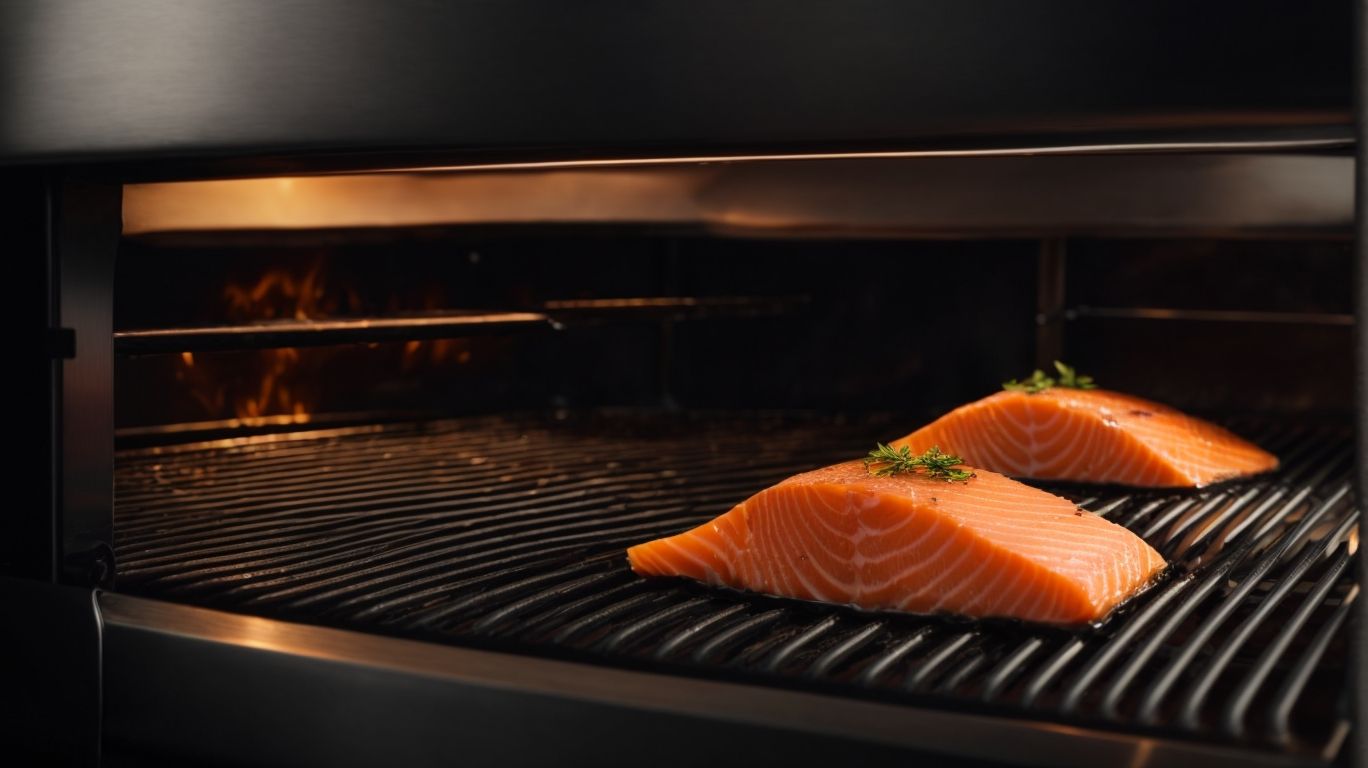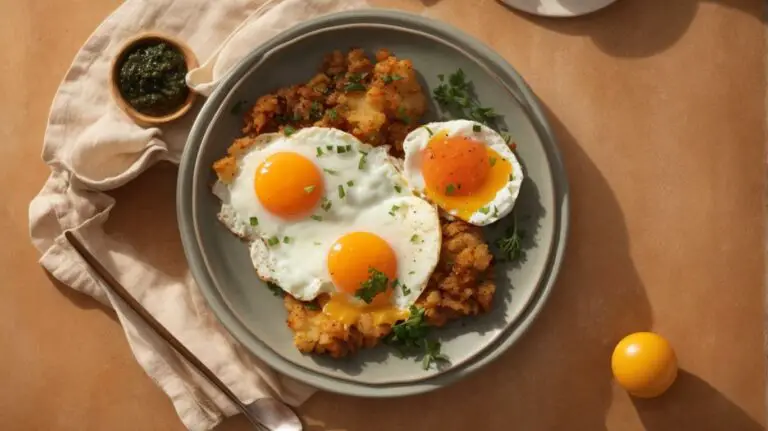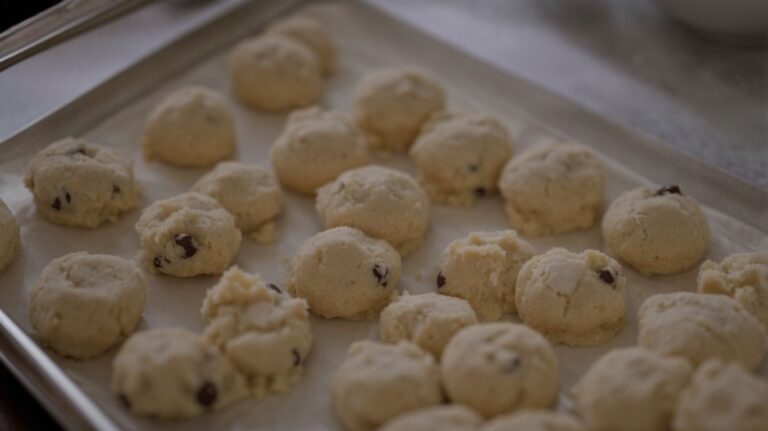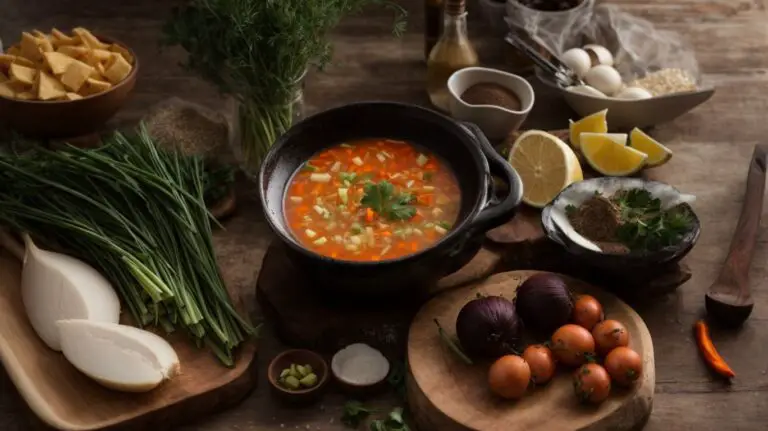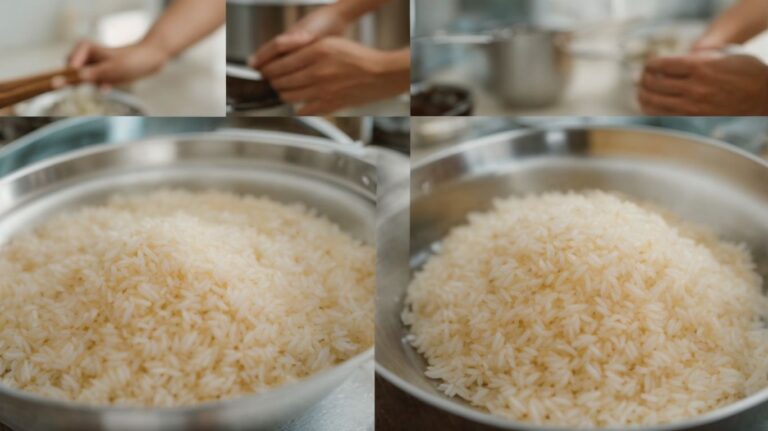How to Cook Salmon Under the Broiler?
Are you looking for a quick and easy way to cook salmon that results in a crispy exterior while retaining moisture and flavor? Look no further!
In this article, we will explore the benefits of cooking salmon under the broiler, what you need to get started, step-by-step instructions, tips and tricks for success, and delicious serving suggestions.
Join me, Chris Poormet, culinary blogger and former chef, as we dive into the world of broiled salmon and learn how to create a mouthwatering dish that will impress your family and friends.
Let’s get cooking!
Key Takeaways:
Why Cook Salmon Under the Broiler?
Cooking salmon under the broiler offers a quick and easy method that results in a crispy exterior while retaining the moisture and flavor of the fish.
Broiling salmon not only saves time but also creates a delightful balance of textures. The high, direct heat applied from the broiler caramelizes the top layer of the salmon, creating that sought-after crispy finish that adds an element of indulgence to your dish. This method locks in the natural juices of the fish, ensuring a moist and succulent bite with each mouthful. The broiler’s intense heat enhances the inherent flavors of the salmon, creating a perfect harmony of taste and texture.
Quick and Easy Method
Broiling salmon is a quick and easy method that can have dinner on the table in just a few minutes, making it an ideal choice for a fast and delicious meal.
When you broil salmon, the high, direct heat cooks the fish rapidly, resulting in a beautifully seared exterior while keeping the inside moist and tender. This method is perfect for those busy weeknights when time is of the essence or when you’re hosting a gathering and need a dish that’s both impressive and fast to prepare. With broiling, the easy setup and minimal prep work involved make it a go-to option for those looking to get a flavorful meal on the table in no time.
Creates a Crispy Exterior
Broiling salmon creates a crispy exterior that enhances the texture of the fish, especially when cooked at high heat, resulting in a delightful crunch on top of the fillets.
When salmon is exposed to high heat under the broiler, the skin undergoes a remarkable transformation. As the heat intensifies, the fat in the skin renders, causing it to crisp up and become wonderfully crunchy. This process not only adds a satisfying textural contrast to the salmon but also helps to lock in the moisture within the flesh, resulting in a tender interior paired with the crispy skin. Achieving this perfect balance between a crispy exterior and a succulent interior is a hallmark of a well-broiled salmon dish.
Retains Moisture and Flavor
When salmon is broiled, it retains its moisture and flavor, accentuated by ingredients like lemon zest, olive oil, and a blend of seasonings that infuse the fish with delicious taste.
Broiling salmon is a cooking method that creates a perfect balance between tenderness and juiciness. The process of broiling quickly caramelizes the top layer of the fish, sealing in its succulent juices and preserving its natural flavor.
The addition of lemon zest brings a zesty brightness, enhancing the inherent richness of the salmon, while olive oil adds a luxurious mouthfeel and a hint of fruity notes.
Seasoning the salmon with a carefully selected blend of herbs and spices not only enhances the flavor profile but also elevates the dish to a gourmet level, creating a harmonious symphony of taste.
What You Need to Cook Salmon Under the Broiler
To cook salmon under the broiler, you’ll need fresh salmon fillets, a broiler pan or baking sheet, olive oil, and a selection of seasonings and herbs such as garlic, pepper, and salt.
Prepare your fresh salmon fillets by rinsing them and patting them dry with paper towels before placing them on the broiler pan or baking sheet. Drizzle the olive oil over the salmon to keep it moist during cooking and add a touch of rich flavor. Season the fillets generously with the garlic, pepper, and salt, ensuring each piece is coated evenly.
Broiling salmon concentrates its flavors and creates a beautifully caramelized crust on the top. Make sure to adjust the rack in your oven, so the fish is about 6 inches from the heat source for optimal cooking. The high heat of the broiler will cook the salmon quickly, so keep a close eye on it to prevent overcooking.
Fresh Salmon Fillets
Fresh salmon fillets serve as the foundation for a delightful broiled salmon dish, offering a healthy and flavorful choice packed with essential nutrients and omega-3 fatty acids.
Rich in proteins, vitamins, and minerals such as vitamin D and selenium, fresh salmon fillets are highly beneficial for overall well-being. Incorporating them into your diet can support heart health, boost brain function, and even improve skin and hair quality. The omega-3 fatty acids in salmon are particularly renowned for their anti-inflammatory properties, reducing the risk of chronic diseases.
When broiled to perfection, fresh salmon fillets provide a succulent and moist texture, enhancing the dish’s overall appeal. This cooking method helps retain the natural flavors and juices of the salmon, resulting in a truly delectable meal that is both nutritious and satisfying.
Broiler Pan or Baking Sheet
A broiler pan or baking sheet is essential for cooking salmon under the broiler, providing a suitable surface for the fish to cook evenly in the oven at the right temperature.
When using a broiler pan or baking sheet, it helps in creating a barrier between the delicate salmon fillet and the direct heat source of the broiler. This barrier prevents the fish from burning on the outside while still remaining raw on the inside, resulting in a perfectly cooked piece of salmon. The pan or sheet also aids in collecting any drippings or marinades, making cleanup much easier.
Olive Oil
Olive oil is a key ingredient for broiled salmon, imparting moisture and a delightful sheen to the fish while helping to achieve a crispy skin when exposed to high heat.
When broiling salmon, the use of olive oil not only ensures that the fish stays moist inside, but it also plays a crucial role in preventing the flesh from drying out during the cooking process. The natural fats in olive oil work wonders in preserving the salmon’s succulence and tenderness, making each bite a delectable experience.
Seasonings and Herbs
Seasonings and herbs like garlic, pepper, and salt are essential for elevating the flavor profile of broiled salmon, infusing each bite with a delicious and savory taste.
Garlic adds a rich, aromatic depth to the salmon, enhancing its overall taste. The combination of pepper and salt provides a perfect balance of heat and seasoning, bringing out the natural flavors of the fish. These ingredients work harmoniously to create a culinary experience that is both flavorful and satisfying.
Steps to Cook Salmon Under the Broiler
Cooking salmon under the broiler involves preparing the broiler pan, seasoning the fillets, placing them in the pan, broiling until cooked, and checking for doneness to ensure a perfectly cooked dish.
It’s essential to preheat the broiler and position the oven rack about 4-6 inches away. While the broiler is heating up, you can season the salmon fillets with your favorite blend of herbs, spices, or a simple mixture of salt, pepper, and olive oil. Once seasoned, place the fillets on the prepared broiler pan and slide it into the oven.
Keep a close eye on the salmon while it’s broiling to prevent overcooking. Cooking times may vary depending on the thickness of the fillets, but a general guideline is about 4-6 minutes per half-inch of thickness. Remember, salmon is cooked through when it flakes easily with a fork and the internal temperature reaches 145°F.
After removing the salmon from the broiler, let it rest for a few minutes before serving to allow the juices to redistribute and enhance the flavors. This simple yet effective method delivers delicious, flaky salmon that’s perfect for any meal.”
Prepare the Broiler Pan or Baking Sheet
Before cooking salmon under the broiler, it’s crucial to prepare the broiler pan or baking sheet by lining it with foil or parchment paper and arranging the fillets for seasoning.
By lining the pan, you create a barrier that not only prevents the fish from sticking but also makes for easier cleanup post-cooking.
When arranging the salmon fillets, make sure to leave some space between each piece to ensure even cooking and allow the seasonings to coat each fillet thoroughly.
Season the Salmon Fillets
Seasoning the salmon fillets with a blend of herbs, spices, and olive oil enhances their flavor profile, ensuring a delicious taste with each bite.
Herbs and spices play a crucial role in infusing the salmon with depth and complexity, while the olive oil helps create a perfectly moist texture. The combination of these ingredients not only adds layers of flavor but also contributes to the overall succulence of the fish.
Properly seasoned salmon will have a delightful harmony of savory, aromatic, and slightly tangy notes that complement the natural richness of the fish. The herbs and spices work together to enhance the taste of the salmon, making each mouthful a sensory experience.
Place the Salmon on the Broiler Pan or Baking Sheet
Carefully place the seasoned salmon fillets on the broiler pan or baking sheet, ensuring even placement for uniform cooking at high heat to achieve the desired texture and doneness.
When arranging the fillets, make sure they are not overcrowded to allow proper air circulation, which aids in the cooking process. Positioning the salmon with enough space between each fillet helps them cook evenly. This method is crucial for obtaining a juicy interior and a beautifully caramelized exterior. Preheating the broiler pan or baking sheet is also recommended, as it helps to kickstart the cooking process and seal in the savory flavors.
Broil the Salmon
Broil the seasoned salmon fillets in the oven at high heat to achieve a crispy exterior and a perfectly cooked interior, ensuring that the top of the fillets is nicely browned for added flavor.
Preheat your oven to 450°F to ensure a quick and efficient cooking process. Place the seasoned salmon fillets on a lined baking sheet, making sure they are not overcrowded to allow even cooking.
Slide the baking sheet into the oven, positioning it a few inches below the broiler element. Let the salmon cook for about 8-10 minutes per inch of thickness, flipping halfway through to ensure even browning.
Monitoring the cooking process is crucial; you want the top of the fillets to develop a beautiful golden color, indicating the perfect caramelization for that burst of flavor.
Check for Doneness
To ensure that the salmon is perfectly cooked, check for doneness by observing the fish’s opaque color, flakiness, and moist texture, indicating that it is ready to be served and enjoyed.
When checking for the color of the salmon, a properly broiled piece will transition from its initial translucency to an opaque pink or coral hue, signifying that it has reached the ideal level of cooking.
The texture plays a crucial role in determining the salmon’s readiness. A well-cooked salmon should be flaky when tested with a fork, yet still retain a slight moistness that ensures a juicy and flavorful bite.
Tips and Tricks for Cooking Salmon Under the Broiler
Enhance your broiled salmon cooking skills with these valuable tips and tricks, including the use of a meat thermometer, adjusting the broiler rack for thicker fillets, and experimenting with various seasonings for diverse flavors.
When using a meat thermometer, aim to reach an internal temperature of 145°F for perfectly cooked salmon; this ensures your fish is both safe to eat and moist.
- For thicker fillets, lower the rack position so the salmon is not too close to the broiler element, preventing burning while still allowing even cooking.
- Consider seasoning your salmon with herbs like dill, thyme, or citrus-based rubs to complement the natural flavors of the fish.
Experimenting with different seasonings can unlock a world of flavor possibilities for your broiled salmon dishes.
Use a Meat Thermometer
Utilizing a meat thermometer is crucial when cooking salmon under the broiler to ensure that the fish reaches the appropriate internal temperature for perfect doneness without overcooking.
Monitoring the internal temperature of the salmon is essential to achieve the desired level of doneness while maintaining its moistness and flavor.
Checking the temperature throughout the cooking process allows you to adjust the cooking time accordingly to prevent dryness or undercooking. Using a meat thermometer ensures precision and accuracy in determining when the salmon is cooked to perfection, whether you prefer it medium-rare, medium, or well-done.
This simple tool can make a significant difference in the outcome of your salmon dish, guaranteeing a delicious and safe meal for you and your loved ones.
Adjust Broiler Rack for Thicker Fillets
When broiling thicker salmon fillets, adjusting the broiler rack to a lower position helps ensure thorough cooking at high heat, allowing the fish to develop a crisp exterior while remaining perfectly moist inside.
By placing the salmon closer to the heat source, you encourage quicker cooking of the exterior, creating that sought-after crispy texture that locks in the juicy tenderness of the fish.
Lower rack positioning also reduces the risk of the outer layers becoming overcooked before the center reaches the ideal doneness, resulting in a harmoniously cooked fillet from edge to center.
This method of adjustment not only enhances the flavor and texture of the salmon but also minimizes the chances of the exterior burning while waiting for the interior to cook through properly.
Experiment with Different Seasonings
Spice up your broiled salmon dishes by experimenting with a variety of seasonings, herbs, and flavor combinations to create unique and delicious variations that cater to your preferences.
Regarding enhancing the flavor profile of your broiled salmon, the possibilities are endless. Herbs like dill, parsley, thyme, or cilantro can add a fresh and aromatic dimension to the dish. Consider combining them with bold spices such as cumin, paprika, or chili powder for an extra kick.
For those who prefer a more subtle approach, a blend of garlic powder, onion powder, and a hint of lemon zest can provide a delicate yet flavorful result.
Don’t be afraid to think outside the box and experiment with unexpected pairings to create your own signature twist on this classic seafood favorite.
Serving Suggestions for Broiled Salmon
Pair your perfectly broiled salmon with a refreshing salad, vibrant vegetables, and a selection of complementary drinks to create a well-balanced and satisfying meal for any occasion.
Regarding salads, consider a crisp arugula and fennel salad with a zesty lemon vinaigrette to contrast the rich flavors of the salmon.
For vegetable sides, roasted asparagus drizzled with balsamic reduction or garlic-infused sautéed spinach would be delightful choices.
To elevate the dining experience, opt for a light white wine such as a Sauvignon Blanc or a crisp Pinot Grigio to complement the fish perfectly. If you prefer non-alcoholic options, a sparkling water infused with cucumber and mint can provide a refreshing counterpart to the meal.
Conclusion: Enjoy Your Delicious Broiled Salmon!
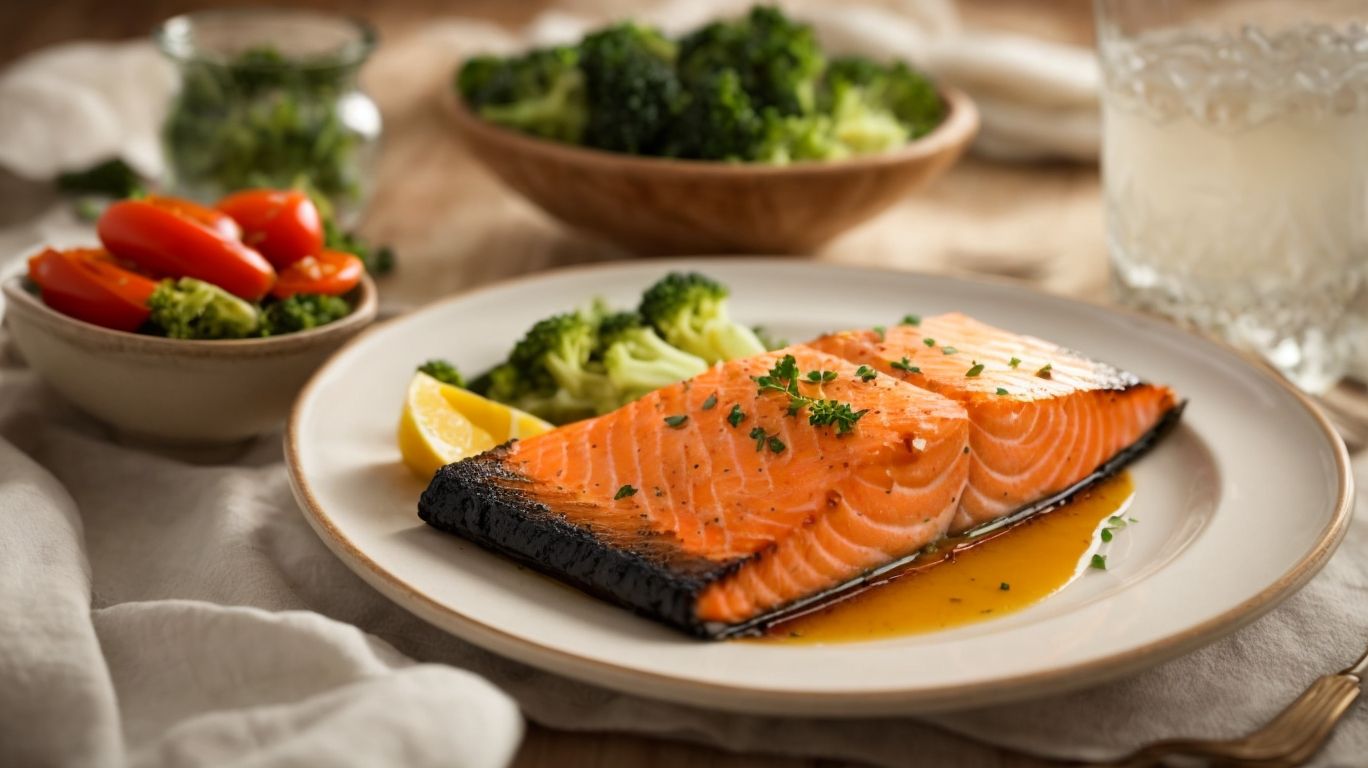
Credits: Poormet.Com – Anthony Torres
Savor the delightful flavors and textures of your broiled salmon creation, following the instructions for a perfectly cooked meal that promises both health benefits and culinary satisfaction.
As you indulge in each succulent bite of the broiled salmon, you’ll appreciate the tender flesh and the hint of lemon that adds a refreshing zing to this dish. The combination of the natural flavors enhanced by the light seasoning creates a harmonious taste profile that is sure to impress your taste buds. The crispy exterior perfectly contrasts with the moist interior, providing a sensorial experience that elevates this simple yet elegant meal to a whole new level.
Frequently Asked Questions
What is the best technique for cooking salmon under the broiler?
The best technique for cooking salmon under the broiler is to preheat the broiler and the pan, and then place the salmon skin-side down on the pan. This allows for a crispy skin and evenly cooked fish.
What is the recommended temperature for broiling salmon?
The recommended temperature for broiling salmon is 450°F. This high heat helps to quickly cook the salmon while still keeping it moist and tender.
How long does it take to cook salmon under the broiler?
It usually takes about 8-10 minutes to cook salmon under the broiler, depending on the thickness of the fillet. It’s important to keep a close eye on the salmon to prevent it from overcooking.
Should I use direct or indirect heat when broiling salmon?
It is best to use direct heat when broiling salmon. This means placing the salmon directly under the broiler element or flame for even and efficient cooking.
What are some seasonings that go well with broiled salmon?
Some seasonings that go well with broiled salmon are lemon, garlic, dill, and black pepper. You can also try using a marinade or glaze for added flavor.
How do I know when the salmon is cooked?
The best way to know when the salmon is cooked is by using a meat thermometer. The internal temperature should reach 145°F for the salmon to be fully cooked. Another way is to check the texture of the fish – it should be flaky and opaque.

